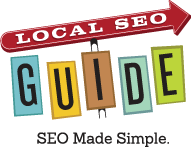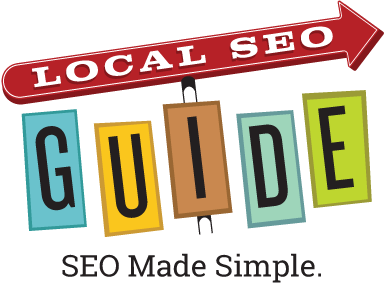image liberally appropriated from Roger Hollander
Thanks to Vanessa Fox as always for eliciting grains of truth from Google. At last week’s Google I/O conference Matt Cutts confirmed that there was an algo change at the beginning of May that will likely be affecting sites that generate a lot of long-tail traffic:
”this is an algorithmic change in Google, looking for higher quality sites to surface for long tail queries. It went through vigorous testing and isn’t going to be rolled back.”
I have already seen the impact on a couple of large sites that I monitor, as well as on smaller sites. In the case of the large sites, the traffic has drifted downward, with a couple of extreme drops, and in the case of the smaller sites traffic growth has either flattened or slowed down to barely noticeable.
While we are testing various hypotheses on some sites, based on what I have seen thus far, sites that have a lot of URLs (e.g. tens of millions) with thin and/or generic content and have most of their inbound links focused around a relatively small set of URLs or that are not generating regular inbound links have seen the biggest impact.
This shouldn’t surprise anybody in SEO land as unique content, good site architecture and strong backlinking have been the cornerstones of SEO for years. That said, it appears that this algo change has raised the game to a whole new level. It used to be that an authoritative domain could add pretty much any content, even duplicated content, it wanted to its site and with a little bit of effort get strong organic traffic. That does not appear to be such an open and shut case anymore.
Which brings me back to everybody’s favorite punching bag, the yellow pages sites.
What are most yellow pages sites?
- Giant directories of generic content most of which is available on thousands of other sites (including Google Maps, Yahoo Local and Bing Local)
- Sites that typically don’t encourage a lot of brand affinity and don’t do anything too remarkable, therefore rarely inspire others to link to them
Over the past few years there have been numerous challenges for yellow pages sites to overcome – the 10 pack, Google Maps, Place Pages, SEM resellers, etc., but for some reason I am feeling like this one is the big wake up call and if you want to survive you probably don’t want to hit the snooze button this time.
If I were you I would revisit those SEO presentations from the past few years and look for all of those items that were recommended as “P2” – stuff you should do but because they were tricky, you never quite got to them:
- Get unique content on your business profile pages and other important pages (and I’m not talking about just putting Yelp and Twitter feeds on them). You need your own user generated reviews, editorial, q&a forums, etc.
- Consolidate the number of pages you show Google and limit them to only those that are “valuable” (i.e. have unique content and/or inbound links). This one’s tricky as it’s hard to know on a large scale which ones are the best.
- Continue or start to drive links to deep URLs
- Make sure all URLs are as close to inbound links as possible
- Prioritize valuable content in the architecture so that they are as close to the home page and other valuable URLs as possible
- Do something remarkable with your service that gets people talking about you and linking to you
Easy right?



17 Response Comments
Nice article. I think these points are important indeed (always have been) but I can not help feeling that the “quality” win Google is referring too is simply not there. You can also find discussions about this quality issue on Webmasterworld and notice that for most search queries the quality seems to be lacking.
You may be right re the “quality” issue, but I think what’s happening is GOOG has dinged more URLs for being low quality and switched them out with whatever they think is better. So they may be switching low for low but the fact is that they are switching and someone is losing out.
As an example I am seeing some low-quality URLs on small sites gain a fair amount of traction over the past couple of weeks and usurp similar URLs on large sites.
Think link integrity and link rot… if you have a bunch of blogs pointing at a page… with time blog links loose their value as they are a temporal element of the algo. If all your links are form year old blog posts, social bookmarking sites… you got problems. IMO, Those links are worth less with every passing day.
As Andrew described above, IYPs have experienced a series of challenges primarily focused around Google’s disruptive, game-changing moves.
I’m not looking at the same analytic data that Andrew’s seeing right now, so I’m still waiting a bit longer before forming my own opinion on whether the Mayday update is affecting yellow pages sites or not.
Even though there are causes for concern when comparing IYP listing contents among the various top sites, I’m still bending towards thinking they retain moderately good quality ratings from Google algorithms. I note that major commercial brands tend to be deemed higher quality in many consumers’ eyes, despite frequently serious user-experience flaws. Top brands enjoy special status, where quality assessment is concerned.
Hi! I’ve been in the “seo game” for years. Andrew I lived up the road from you in Walnut Creek. Back in England now.
Anyway your comments and thoughts are spot on.
I have branched out and have two small businesses I have set up that 1/ I wanted to do and 2/ Another thing I used to do and am doing again to make money
I am seeing my rankings skyrocket for my niche businesses – one has a top 5 spot with a Blogger blog which was difficult before.
I do keep the quality high and am finding lots of people linking to me without asking.
I love the way search keeps changing like this and it does keep me mentally alert – ! Thank to Google for that.
So am I the only SEO – Town Crier? 😉
I am really thinking of getting a Google coloured livery with a “Find Me On Google Places” piece of embroidery sewn on
Best
David
Plymouth
England
Terry, I’m not convinced of the concept of “link rot” with blogs.
I see older blog content ranking very well every day in the SERPs, even though there are a great many other, more-recent blog posts which have subsequently targeted the same keyword phrases. Perhaps link rot or, more recent timeliness of articles is a bigger factor within Blog Search verticals than within regular keyword SERPs.
In contrast, there are patents and research papers indicating a general preference towards legacy content on stable URLs which have been around for a long while — they develop some sort of “incumbent” status and appear to be deemed good and trustworthy.
I didn’t say the rate of value decline was the same for every page. So yes… some hold up but what you find is that those that do often aren’t dependent on the blogosphere for authority they have a diversified link profile.
Chris, I agree re the brand quality thing. That said:
1. There are plenty of yellow page brands that are not as high quality as they might think they are (e.g. regional/smaller players)
2. Within the high quality ranks I believe this algo change is going to create more distance between the top sites and those trying to get to the top
“1. There are plenty of yellow page brands that are not as high quality as they might think they are (e.g. regional/smaller players)”
There’s also a ton of imitations that offer no value and are more of a scam than a real company. Be careful out there
Like Chris I’m not seeing a clearly negative impact from this update on larger IYP’s, but nonetheless I think Andrew’s advice should be printed out and hung in every cubicle in every online department of every directory publisher. Ignoring SEO for a second, can you look yourself in the eye and say why a consumer should visit your business profile page rather than someone else’s? If not, don’t count on Google for traffic, it’s just a matter of time.
Although highly frustrating for webmasters, this looks like it may be an over all win for the search ecosystem.
It’s time to nut up or shut up and frankly I don’t have that much sympathy for lower quality sites that are taking a beating.
Viva la quality!!!
@Jordan … it is good for the search ecosystem if the quality increased. Instead… it seems there are a lot of lowquality sites ranking high everywhere.
Also… what I DO see is NEW pages of our website getting crawled like crazy, indexed within a couple of hours and also get ranked high enough. This MAY indicate that Google is getting fresher content higher in the rankings (I am NOT talking about realtime… but freshness).
Also… which we all seem to forget is the focus of google on local results, video, images etc etc… So worldwide websites with NO new content will lose authority to local authority sites (now or in the future).
Great piece, Andrew…and a large part of our current monitoring up here in Canada, is our YellowPages Group as they buy up local directory after directory….all to try to staunch the reduction in print yellow page revenues. They have also just added video to their offerings within their large yellowpages.ca business listings too! All in all, needs careful attention for an SMB to see the value in same, eh?
🙂
Jim
Have you noticed the changes that they made to yellowpages.com (now yp.com) a few months ago?
They did the opposite of what you recommend. They eliminated the descriptive text that use to display under a businesses name, reduced the size of the banners by 60% or so, decreased the emphasis (previously buttons, now text links) they had for special features like video or audio.
Most customers banners were designed for the previous size, so the writing is so small now that it’s nearly impossible to read.
My friends that still work there can’t figure out why the changes were made. Any chance you know?
Not sure what’s going on over there Julie, but their Quantcast graph seems to concur with what you are seeing.
Julie, I haven’t analyzed the changes, but usability research usually finds that consumers tend to despise banner ads, so reducing their size would result in better user-experience.
Andrew, it’s more complex to dissect out what might be happening, since they’ve made some large upheaval changes in the last few months, such as redirecting from yellowpages.com to yp.com:
http://gesterling.wordpress.com/2010/04/05/yellowpages-com-redirecting-to-yp-com/
They’re not redirecting yellowpages.com to yp.com – they have merely rebranded yellowpages.com pages with the YP.com brand. I wouldn’t expect this to tank their organic traffic.
The Quantcast numbers may not be telling the whole story (it doesn’t break out paid v. organic), the downturn in yellowpages.com combined with the flat traffic for yp.com suggests that they may have done some SEO damage to themselves.